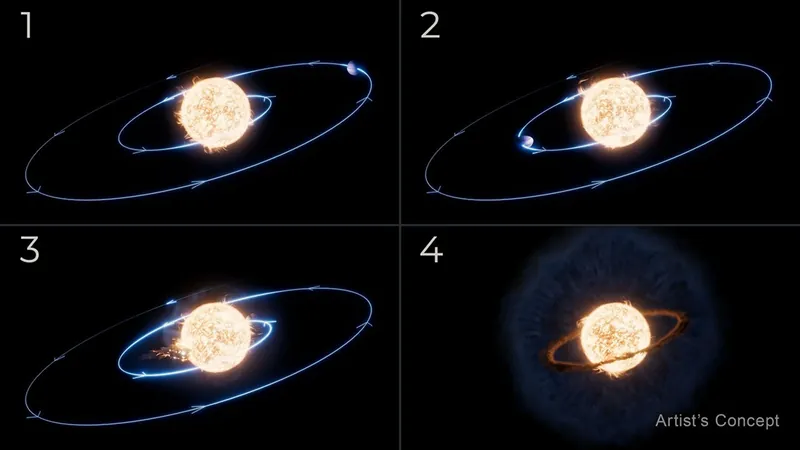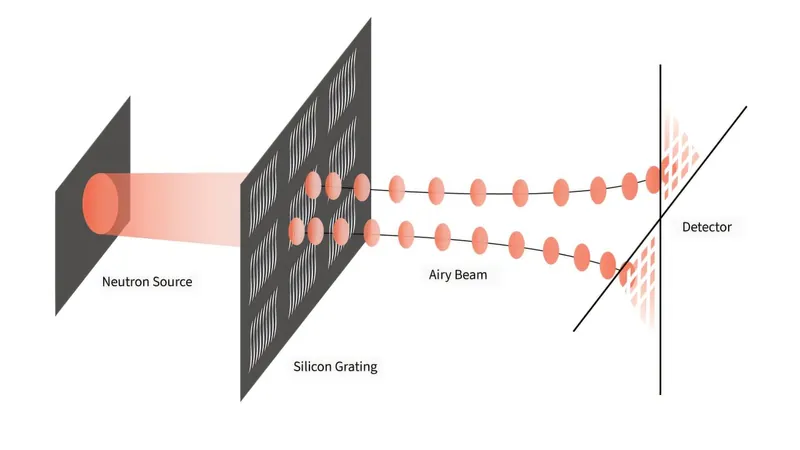
Unveiling Cosmic Secrets: How a Star Devoured a Planet
2025-04-10
Author: Olivia
A Shocking Revelation from the Cosmos!
NASA's groundbreaking James Webb Space Telescope has turned our understanding of cosmic events on its head! Recent observations suggest that what we thought we knew about a star consuming a planet is utterly wrong. Instead of swelling to engulf the planet, as previously believed, it appears that the planet was slowly spiraling into the star, leading to its ultimate demise.
A Unique Insight from Webb
According to Ryan Lau, the lead author of the study and an astronomer at NSF NOIRLab, the telescope's high-resolution infrared imaging has opened up new vistas into the fates of planetary systems, possibly shedding light on the future of our own Earth. This unprecedented event marks a major leap in astronomical research.
The Star-Centric Drama
Located a staggering 12,000 light-years away in our Milky Way galaxy, the star at the center of this drama was identified as ZTF SLRN-2020. Initially detected as a flash of light by the Zwicky Transient Facility, infrared data from NASA's NEOWISE revealed that the star's brightness increased a year earlier—suggesting some dusty shenanigans were already afoot.
Red Giant? Not Quite!
Previous assumptions led researchers to believe the star was evolving into a red giant, gradually enveloping its surroundings. However, Webb’s high-precision measurements indicated the star was dimmer than expected, challenging the notion of it expanding to consume the planet.
A Planet’s Final Orbit
Imagine a planet, once the size of Jupiter, zipping around a star closer than Mercury orbits our Sun! Over millions of years, this planet's orbit decayed, drawing it dangerously close to the star’s fiery atmosphere. As Lau states, this led to a harrowing moment where the planet began to graze the stellar surface—setting off a chain reaction of destruction.
The Explosive Finale
During its catastrophic descent, the planet would have expelled gas from the star's outer layers, creating a cloud of elements that cooled into dust over a year. But wait—there's more!
Surprising Insights from the Aftermath
Researchers anticipated finding a cool, expanding dust cloud, but what they discovered was a hot disk of molecular gas surrounding the star, teeming with compounds like carbon monoxide. Colette Salyk, an expert in exoplanet research, expressed amazement at finding characteristics resembling a planet-forming region amidst this cosmic wreckage.
A Glimpse into the Future of Astronomy
This discovery positions scientists right at the forefront of astrophysical research, offering a rare look at the aftermath of such celestial events. As Lau points out, this observation is just the beginning; researchers are eager to expand their sample and delve deeper into the mysteries of the universe.
Exciting Prospects Ahead!
The James Webb Telescope is part of a global initiative aimed at observing cosmic phenomena in real-time, ready to capture fleeting moments like supernova explosions. Future tools, like the Vera C. Rubin Observatory and NASA’s Nancy Grace Roman Space Telescope, will play crucial roles in tracking these transformative events across the cosmos.









 Brasil (PT)
Brasil (PT)
 Canada (EN)
Canada (EN)
 Chile (ES)
Chile (ES)
 Česko (CS)
Česko (CS)
 대한민국 (KO)
대한민국 (KO)
 España (ES)
España (ES)
 France (FR)
France (FR)
 Hong Kong (EN)
Hong Kong (EN)
 Italia (IT)
Italia (IT)
 日本 (JA)
日本 (JA)
 Magyarország (HU)
Magyarország (HU)
 Norge (NO)
Norge (NO)
 Polska (PL)
Polska (PL)
 Schweiz (DE)
Schweiz (DE)
 Singapore (EN)
Singapore (EN)
 Sverige (SV)
Sverige (SV)
 Suomi (FI)
Suomi (FI)
 Türkiye (TR)
Türkiye (TR)
 الإمارات العربية المتحدة (AR)
الإمارات العربية المتحدة (AR)